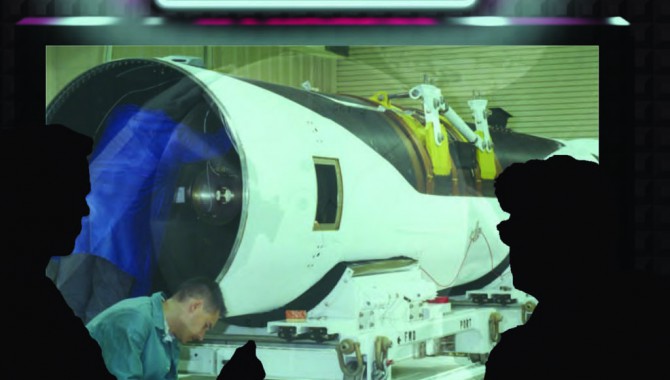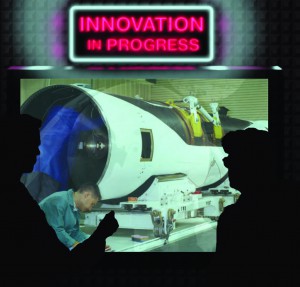
By Ed Hoffman
Sometimes organizational “support” kills good new ideas.
Entrenched ways of doing things and bureaucratic caution can and do discourage innovation in organizations, but even organizational support for new ideas can be a mixed blessing.
 “Do what you want as long as I don’t know about it,” a manager once told me. I could run with any idea I wanted, but if something went wrong, it was my neck on the line. I found this both freeing and discouraging. While I had the freedom to experiment, it bothered me that I was left to deal with the consequences if my good idea didn’t pan out. And I was even more discouraged by the fact that I had to bring my new idea to life under the radar, without the organizational resources and official recognition that I thought could help it happen.
“Do what you want as long as I don’t know about it,” a manager once told me. I could run with any idea I wanted, but if something went wrong, it was my neck on the line. I found this both freeing and discouraging. While I had the freedom to experiment, it bothered me that I was left to deal with the consequences if my good idea didn’t pan out. And I was even more discouraged by the fact that I had to bring my new idea to life under the radar, without the organizational resources and official recognition that I thought could help it happen.
I believed then (and still do) that if something went wrong, the responsibility for dealing with it rested with me. I also believed (and still do) that a good manager should acknowledge good new ideas and, if he thinks they are worth trying, should ask, “What do you need from me?” Isn’t it the job of a manager to support efforts to solve organizational problems in new ways or develop new and better ways of working?
You’d think the answer to that question has to be “yes,” but it’s a “yes” that comes with some interesting caveats and qualifications.
Years after that manager advised me to not tell him about the new ideas I was working on, I had a discussion with some engineers at one of NASA’s centers and learned about a unique tiger-team activity that could potentially save money and streamline operations in the center’s business area. This activity was supported by the center but had almost complete autonomy and was unknown elsewhere in the agency.
When I recommended to one engineer that the Academy might highlight some of his team’s good innovative practices, he seemed hesitant. I later learned that this reluctance stemmed from my “management” status. From this experience and others like it, I have come to find that the survival of good ideas, particularly quiet innovations in the way work is done, depends on their ability to fly under the radar, especially in the early stages of their development. When good ideas are exposed, they face two likely outcomes: either the organization looks for ways to “control” the innovative approach (which often means making it less innovative and weighing it down with rules and requirements), or management genuinely wants to help develop and exploit the innovation.
At first glance, the second outcome does not sound like a problem, but often it is. Especially in their early stages, good new ideas tend to be delicate creatures. They probably have some weaknesses that need to be discovered by trial and error; if they are genuinely new, people may need to develop some new skills before they can carry them out effectively. Embryonic new ideas strengthen and mature thanks to the efforts of a very small number of people who understand the purpose and potential of those ideas, the nourishment they need, the time they need to develop, and the context in which they can thrive. Premature and too-vigorous organizational help can mean too many cooks in the kitchen. The new idea can easily be distorted, or succumb to unrealistic expectations about how quickly it will show results. Plenty of good ideas have been discarded as “failures” because they didn’t pay off as soon or as spectacularly as management thought they should.
Good ideas need support to be fully realized, but they also dread support that is likely to bring these unintended consequences with it.
So what is the solution? Many organizations live and die by good new ideas. The challenge they face is to cultivate good ideas by giving innovators just the right blend of freedom and support. One simple approach that is not taken often enough is to let the innovators themselves decide how the organization can help them develop their ideas. A manager asking, “What do you need from me?” has a good chance of finding the sweet spot between no support (“Do what you want as long as I don’t know about it”) and idea-killing interference.
Plenty of good ideas have been discarded as “failures” because they didn’t pay off as soon or as spectacularly as management thought they should.
Some organizations give employees the freedom they need to come up with new ideas by specifying that a percentage of their work time can be devoted to anything that interests them, with no pressure to come up with a successful product or even report back to their supervisors on what they’re doing. A policy of encouraging individuals to spend 20 percent of their time on personal projects has produced some valuable innovation at Google (though recent news stories about creative employees leaving the company because they think it has become too bureaucratic and slow to adopt their ideas suggest how hard it is for large organizations to maintain the innovative spirit that made them successful in the first place). For many years, 15 percent of 3M employees’ time was reserved for creative work. That, combined with frequent opportunities to tell others about their work, famously brought together the scientist who had developed a lightly sticking adhesive with the researcher looking for a way to keep slips of paper in place in his hymn book. The result: Post-it notes.
These examples of individual freedom to create raise another tricky point about the process of turning a new idea into a mature innovation—a useful product or practice. When the people working privately do eventually bring their good new ideas to the attention of the organization, it is often hard for the organization to understand their value, and the more innovative an idea is, the more likely it is that the organization will fail to get it. The classic example of this dilemma is the Xerox PARC story. In the 1970s, Xerox gave a group of very smart researchers at the Palo Alto Research Center approximately five years of absolute freedom and adequate funding to come up with ideas about the office of the future. They did their job well, inventing the graphical user interface, the computer mouse, the laser printer, and Ethernet networking. In a way, these innovations were too innovative for Xerox decision makers; they didn’t understand their potential—didn’t understand that they would in fact define the office of the future. So Apple, not Xerox, was the first to build a commercial, graphical-user-interface personal computer—now the standard for all personal computers.
What does all this mean for NASA? Giving employees “free” time to develop new ideas is definitely a challenge for a public agency like NASA, with its tight budgets and tight project schedules, but I think there are ways the agency as a whole and managers locally can encourage individuals and small groups to work on innovative ideas. Accepting the possibility that a new idea might flop (and many will) and not penalizing people when it does is one important step. Asking, “What can I do to help?” and providing just the right amount of support is another. (Just as astronomers have started talking about “Goldilocks planets”—planets that may harbor life because they are just right, not too hot or too cold—maybe we should talk about Goldilocks support for innovation.)
And when the great new ideas that people at NASA can and will develop are brought to the attention of the agency’s decision makers, those leaders need to have the openness and imagination to understand their value and support the sometimes lengthy process of successfully putting them to work.
None of this is easy, but the future greatness of NASA depends on doing it right.
More Articles by Ed Hoffman
- From the APPEL DirectorAnd the Band Played On (ASK 41)
- From the APPEL DirectorChange Management and Adaptive Challenges (ASK 40)
- From the APPEL DirectorLessons from Torino (ASK 39)
- From the APPEL DirectorProject Management Trends and Future Reality (ASK 38)
- From the APPEL DirectorThe Shuttle: Image of an Organization (ASK 37)
- + View More Articles






